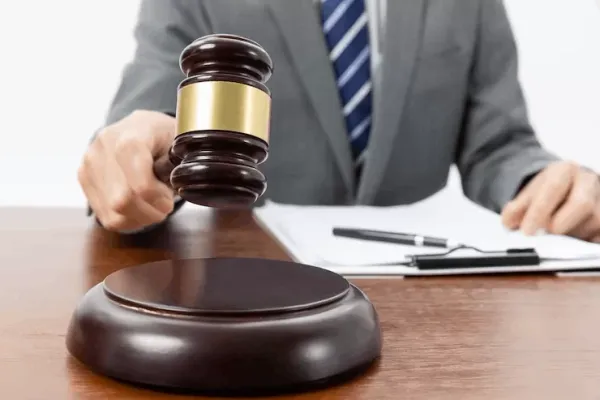The Structure of Acquittal: A Critical Examination of the Mumbai Train Blasts Judgment and its Jurisprudential Impact

Author: Dharmendra D Jadhav, practising advocate at the Bombay High Court.
Introduction:
The realm of criminal jurisprudence, particularly in cases of grave national import such as terrorism, often oscillates between the imperatives of justice for victims and the unyielding demands of due process for the accused. The recent pronouncement by the High Court of Judicature at Bombay concerning the appeals arising from the horrific 2006 Mumbai train blasts serves as a potent reminder of this delicate balance.
This judgment, dissecting the prosecution's case under the stringent provisions of the Maharashtra Control of Organised Crime Act, 1999 (MCOCA) and the Unlawful Activities (Prevention) Act, 1967 (UAPA), delves into critical evidentiary principles and exposes systemic vulnerabilities in investigative practices. For law students and practising advocates, this ruling offers a profound case study on the rigorous application of the law of evidence, the sanctity of procedural safeguards, and the profound implications for the future movement of terrorism-related prosecutions in India.
The Factual Matrix and Trial Court's Convictions:
The devastating coordinated bomb blasts that ripped through seven Mumbai local trains on July 11, 2006, between 6:23 PM and 6:29 PM, unleashed an unprecedented tragedy, claiming 187 lives and injuring approximately 824 individuals. The investigation, conducted by the Anti-Terrorism Squad (ATS), concluded in a comprehensive chargesheet against thirteen accused, with fifteen others designated as wanted and two deceased. The Special Court, constituted under MCOCA and the NIA Act, after an extensive trial, delivered its judgement on 30th September, 2015, convicting multiple accused under various heinous charges.
The Special Court’s judgment saw several accused handed over capital punishment and multiple life imprisonments, signalling the gravity with which the trial court viewed the offences. For instance, Accused No. 1, Kamal Ansari, faced the gallows for charges including murder (Section 302 read with 120-B of the Indian Penal Code, 1860), offences under the Explosive Substances Act, and various sections of the UAPA and MCOCA.
Similarly, Accused No. 3, Mohd. Faisal Shaikh and Accused No. 4, Ehtesham Siddique, received similar stringent sentences, based on their alleged roles in the conspiracy, bomb planting, and other offences. The trial court's foundational pillars for conviction apparently rested upon a combination of direct evidence, particularly eyewitness accounts, confessional statements recorded under MCOCA, recoveries of incriminating articles, alleged link with banned organisations, and Call Detail Records (CDRs).
The High Court's Scrutiny and the Rationale for Acquittal:
The High Court’s appellate jurisdiction provided a critical lens through which the Special Court's findings were carefully re-examined. A crucial observation by the High Court, setting the jurisprudential tone for its judgment, bears reiteration: “creating a false appearance of having solved a case by presenting that the accused have been brought to justice gives a misleading sense of resolution. This deceptive closure undermines public trust and falsely reassures society, while in reality, the true threat remains at large.” This statement highlights the judiciary's commitment to substantive justice over superficial resolution, even in the face of compelling public pressure.
While the exact number of accused acquitted by the High Court in the appeals is not fully detailed in the provided content, the judgment explicitly states the acquittal of Accused No. 13, Asif Khan Bashir Khan, from a litany of charges, including murder, attempt to murder, grievous hurt, criminal conspiracy, and various sections under UAPA, Explosive Substances Act, and Explosives Act. The High Court's reasons for overturning convictions, a path distinct from the Special Court’s findings, emanated from a meticulous dissection of several evidentiary categories
A. The Risk of Retracted Confessions: The most pronounced infirmity identified by the High Court lay in the confessional statements. Eleven accused had reportedly tendered confessions to Deputy Commissioners of Police (DCPs) under MCOCA between 4th October and 25th October, 2006. However, a significant legal hurdle emerged: these confessions were retracted by the accused shortly after their recording. The High Court observed disconcerting commonalities, such as “identical Part-I and Part-II of the confessional statements,” and inconsistencies, including “variations in mentioning the names of accused.” Submissions were made contending that these statements were not voluntarily given but “prepared by the ATS officers in the ATS office and were supplied to the DCPs only for signing,” implying procedural irregularities and a likely coercion.
A fatal blow to the prosecution’s dependence on confessions was the court’s finding of the “absence of certificates” or deficiencies in certificates required under Sub-rule 6 of Rule 3 of the MCOC Rules, a mandatory procedural safeguard. Crucially, the court explicitly found that some confessions, notably that of Accused No. 2, appeared to have been “extorted by torture”. This finding is in line with established legal principles that confessions must be free, voluntary, and untainted by inducement, threat, or promise. The court aptly cited precedents underscoring that “the law is suspicious in the highest degree of confessions; it suspects that it does not get at the truth as to the way in which they are obtained” and that “the slightest hope of mercy to induce a prisoner to disclose is enough to render the statement inadmissible”.
The High Court concluded that the retracted confessions were not “full and detailed”, thus casting insurmountable doubt on their truthfulness and admissibility as sole evidence for conviction. The basic principle that a retracted confession, while not inadmissible per se, necessitates independent and substantial corroboration, especially when circumstances breed suspicion regarding its genuineness, clearly guided the High Court’s decision. The perceived absence or inadequacy of such corroboration proved critical.
B. Flawed Eyewitness Identification: The reliability of eyewitness identification also came under severe judicial scrutiny. The High Court noted that the identification of Accused No. 1, Accused No. 3, and Accused No. 13 in court was problematic due to the “no T.I. Parade” (Test Identification Parade) being conducted. Drawing upon the Supreme Court’s judgement in Dana Yadav v. State of Bihar, the High Court reiterated that “if a witness identifies the accused in court for the first time, the probative value of such uncorroborated evidence becomes minimal”. This reinforces the critical importance of a properly conducted T.I. Parade as a substantive piece of corroborative evidence, particularly when the identity of the accused is disputed. The absence of such a foundational step significantly eroded the credibility of in-court identifications.
C. Deficiencies in Evidence Recovery and Linkage: The judgment highlighted critical lapses in the process of evidence recovery and its linkage to the accused. Discrepancies concerning the sealing of recovered articles, such as those from Accused No. 13’s residence, where the seal was allegedly from a different police station without proper documentation of its transfer, raised serious doubts about the integrity of the evidence. The court found that the mere recovery of “literature” (books and maps), even if potentially propagating violence, was “irrelevant and not sufficient to connect them with the alleged offence or to base conviction”, citing precedents that mere possession, without proof of active involvement in the execution of violent ideas, does not constitute an offense. Similarly, other articles like CPUs, cookers, wires, and circuit boards, while seemingly innocuous in isolation, “lose its significance and become irrelevant having observed and held that the prosecution has failed to establish the offence beyond reasonable doubt against the accused”. This emphasizes the legal requirement of a clear and unbroken chain of custody and logical nexus between recovered articles and the commission of the crime.
D. Insufficient “Association” Evidence: The prosecution’s argument linking some accused to alleged visits to Pakistan for militancy training was also found wanting. The High Court categorically stated that “even if the said evidence is held to be sufficient to establish the accused’s visit to Pakistan, the same, in itself, is not sufficient to indicate or suggest or to establish the fact of commission of bomb blasts by these accused”. This highlights the judiciary’s reluctance to convict based solely on “association” or suspected past activities, without direct, substantial evidence linking such associations to the specific criminal act in question.
E. Non-Reliance on CDRs: Perhaps most tellingly, the crucial Call Detail Records (CDRs), which could have provided a strong evidentiary link between the accused, were regrettably “destructed and not relied upon by the prosecution”. This absence of a vital piece of technical evidence further weakened the prosecution's overall case.
Jurisprudential Impact on Terrorism-Related Cases:
The High Court’s judgment in the Mumbai train blasts case carries far-reaching jurisprudential implications for the prosecution of terrorism-related offences in India, particularly those invoked under special statutes like MCOCA and UAPA.
- Reinforcement of Due Process and Evidentiary Standards: The ruling emphatically reinforces the fundamental principle that even in cases involving grave threats to national security, the bedrock principles of criminal jurisprudence—presumption of innocence, burden of proof on the prosecution, and proof beyond reasonable doubt—cannot be compromised. It serves as a judicial check against the temptation to expedite justice at the cost of legal propriety, reminding all stakeholders that conviction must rest on solid, unimpeachable evidence.
- Elevated Scrutiny of Confessional Statements: This judgment will undeniably lead to an even higher degree of judicial scrutiny over confessional statements, especially those recorded under special laws like MCOCA, which derogate from general evidentiary rules. Investigating agencies will now face an even more rigorous obligation to demonstrate the absolute voluntariness and procedural integrity of such confessions. The judgment serves as a stern warning against the use of coercion or shortcuts in obtaining confessions. Future prosecutions will likely require confessions to be backed by extensive corroborative evidence, moving away from instances where confessions form the primary or sole basis of conviction. This might encourage legislative review or stricter guidelines for recording confessions to align with modern legal principles and human rights standards.
- Redefining the Ambit of “Association” as Evidence: The High Court’s stance on the insufficiency of mere association with proscribed organizations or foreign travel without direct linkage to the specific offense is critical. It mandates that investigating agencies must move beyond circumstantial inferences of “guilt by association” to present concrete, direct evidence of active involvement in terrorist planning, financing, or execution. This will compel a shift towards intelligence-driven investigations that pinpoint specific overt acts contributing to the commission of the crime.
- Implications for Investigative Agencies and Conviction Ratios: The judgment implicitly casts a critical eye on the efficacy and adherence to legal protocols by investigating agencies. The acquittal, despite the heinous nature of the crime, highlights systemic gaps in evidence collection, preservation, and presentation. This directly impacts the conviction ratio in complex terrorism cases.
Strategies for Enhancing Conviction Ratios and Investigative Effectiveness:
The judgment, while affirming judicial independence, simultaneously lays bare the urgent need for a paradigm shift in investigative methodologies to enhance conviction rates in terrorism-related cases.
- Robust Forensic and Technical Evidence Framework:
Investment in Advanced Forensics: There is an undeniable imperative to significantly upgrade forensic capabilities, particularly in the analysis of explosives, digital footprints, and other technical evidence. This includes modernizing laboratories, equipping them with cutting-edge technology, and providing continuous advanced training to forensic experts.
Specialised Cyber Forensics: Given the increasing reliance of terrorist entities on digital communication and online radicalisation, developing highly specialised cyber forensic units is paramount. These units must be proficient in digital data recovery, crypto-analysis, and tracing encrypted communications and financial transactions across digital platforms. The failure to rely on CDRs in the instant case underscores this critical void.
- Procedural Integrity and Reliability of Confessions:
Mandatory Videography: To unequivocally address concerns of coercion and voluntariness, the mandatory videography of all stages of interrogation leading to and including the recording of confessional statements should be implemented. This objective record would significantly bolster the admissibility of confessions and counter allegations of torture or undue influence.
Strict Adherence to Legal Safeguards: Investigating officers must be rigorously trained and held accountable for strict adherence to all procedural safeguards stipulated under MCOCA, UAPA, and the Indian Evidence Act, 1872, especially concerning informing the accused of their rights, ensuring adequate legal access, and compliance with certification requirements.
Independent Corroboration as a Prerequisite: A policy must be adopted where no confession, particularly a retracted one, serves as the sole or primary basis for conviction. Independent and irrefutable corroborative evidence, obtained through diligent investigation, must always accompany confessional statements to withstand judicial scrutiny.
- Strengthening Eyewitness Identification Procedures:
Prompt and Fair Test Identification Parades (T.I. Parades): The judgment underscores the crucial role of TIPs. Investigating agencies must conduct T.I. Parades promptly, meticulously, and fairly, ensuring no prior exposure of the accused to the witness. This procedural discipline significantly enhances the probative value of subsequent in-court identifications.
Comprehensive Witness Protection Programs: To encourage cooperation and ensure the integrity of witness testimony, robust witness protection programs, encompassing security, relocation, and financial support, are essential. This mitigates the risk of witnesses turning hostile or retracting statements due to intimidation.
- Scientific Evidence Collection and Unbroken Chain of Custody:
Meticulous Chain of Custody: Any legal infirmity concerning the chain of custody of evidence, as highlighted in this judgment, can be fatal. Agencies must institute rigorous protocols for collecting, packaging, transporting, and preserving every piece of physical evidence, ensuring an unbroken and documented chain of custody from seizure to presentation in court.
Specialized Crime Scene Management: Investing in advanced training for officers in forensic crime scene management, including precise documentation, evidence mapping, and contamination prevention, is non-negotiable for building airtight cases.
- Intelligence-Led Policing and Proactive Disruption:
Enhanced Intelligence Gathering: A shift towards proactive, intelligence-led policing is critical. This involves deep intelligence penetration into terrorist networks, identifying their financing, recruitment, and operational plans before incidents occur, enabling preventive disruptions and gathering stronger, actionable evidence.
Inter-Agency Collaboration: Seamless and efficient intelligence sharing and operational coordination among various national, state, and international intelligence and investigating agencies are paramount to dismantle complex transnational terrorist networks.
- Continuous Legal Training and Specialisation:
Legal Acumen for Investigators: Regular and rigorous legal training for investigating officers, focusing on criminal law, the law of evidence, constitutional safeguards, and the nuances of anti-terrorism legislation, is crucial. This empowers them to build legally sustainable cases.
Specialised Prosecution Cadres: Developing a cadre of highly specialized public prosecutors for terrorism cases, with in-depth knowledge of complex evidentiary challenges, forensic science, and counter-terrorism legal frameworks, is essential for effective prosecution.
Conclusion:
The Bombay High Court’s judgment in the Mumbai train blasts appeals serves as a touching reminder that even in the most shocking cases of terrorism, the fundamental principles of criminal justice cannot be circumvented. While the acquittal of some accused might be perceived with dismay by the public, it unequivocally underscores the judiciary's unwavering commitment to the rule of law and the careful evaluation of evidence.
For law students, this case illuminates the critical interplay between substantive law and procedural safeguards. For practicing advocates, it provides invaluable insights into effective defence strategies and the evidentiary pitfalls that can derail even high-profile prosecutions. Ultimately, this judgment is not merely a verdict on individual culpability but a clarion call for investigating agencies to recalibrate their methodologies, embrace scientific accuracy, uphold procedural sanctity, and adopt a culture of unquestionable evidence collection, thereby truly upholding the public trust and ensuring that justice, in its fullest and most righteous sense, is served.
To update yourself with the daily news, visit legalwiki.co




